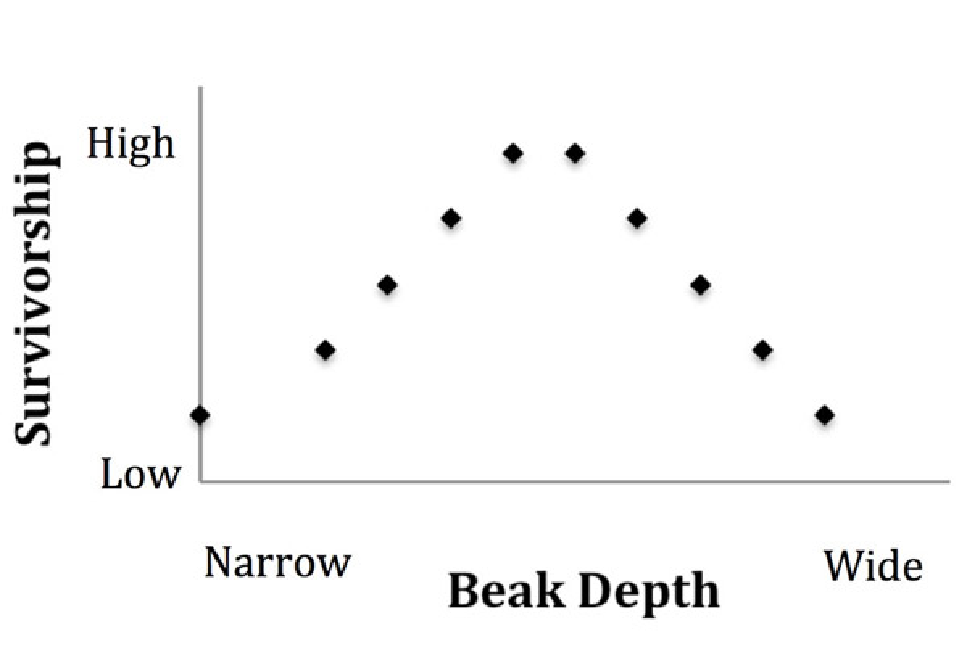What is a riboswitch?
What will be an ideal response?
Ans: A riboswitch is a system in which a ribozyme can be activated or deactivated by the binding of a ligand. In one example, the metabolite GlcN6P activates a ribozyme that catalyzes its own removal, preventing translation of an enzyme that participates in the production of GlcN6P.
You might also like to view...
The figure below shows the relationship between beak depth in the medium ground finch on Daphne Major and relative fitness. Assuming that beak depth is heritable, what do you predict about beak depth in the next generation?

A. Mean beak depth will decrease.
B. Mean beak depth will increase.
C. Mean beak depth will stay about the same.
D. Mean beak depth in the next generation cannot be predicted using this data.
Clarify Question
What is the key concept addressed by the question?
What type of thinking is required?
Gather Content
What do you already know about relative fitness? What other information is related to the question?
Choose Answer
Given what you now know, what information is most likely to produce the correct answer?
Reflect on Process
Did your problem-solving process lead you to the correct answer? If not, where did the process break down or lead you astray? How can you revise your approach to produce a more desirable result?
Where can most of the oxygen in the blood be found?
A) bound to hemoglobin B) in white blood cells C) combined with carbon dioxide D) dissolved in the plasma
Binding of IgE to the surface of sensitized cells leads to (activation/degranulation/lysis) of the cell, releasing many inflammatory chemicals
What will be an ideal response?
Which statement is true regarding endospores and sporulation?
a. The three steps of sporulation are activation, germination, and outgrowth. b. Endospores readily take up stain and thus are often seen as stained circles within vegetative cells. c. Calcium complexed with dipicolinic acid helps to dehydrate a developing endospore. d. Sporulation is a type of reproduction and is an alternative to binary fission.